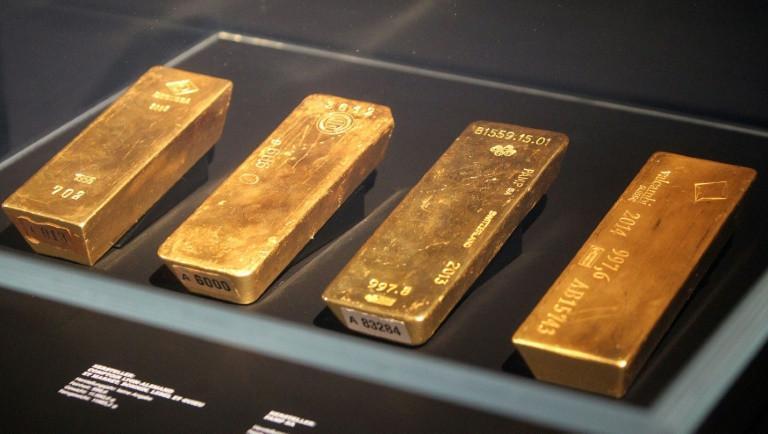Finally home, Bundesbank’s gold goes on show
FRANKFURT-Agence France-Presse

All that glitters is definitely gold in a new exhibition at Germany’s central bank that lifts the veil on the nation’s massive reserves of the precious metal, partly to reassure sceptics that the prized ingots are really there.
Europe’s top economy and export powerhouse has the world’s second-largest gold reserves after the United States, but for decades almost none of the roughly 3,400 tons of yellow metal, worth a staggering 117 billion euros ($145 billion) today, could be found on German soil.
To keep the gold safe from a possible Soviet invasion during the Cold War, as well as for other historical reasons, the bars were instead stored in the treasuries of central banks in New York, London and Paris.
But growing public pressure spurred the Bundesbank to bring half its reserves home, a feat it completed last year through a series of cloak-and-dagger shipments from the Federal Reserve, the Bank of England and the Banque de France.
The bullions are now kept under lock and key in a secret location in the bank’s basement in Frankfurt -- except for the eight bars on display at its Money Museum as part of the exhibition “Gold. Treasures at the Deutsche Bundesbank,” which runs until September.
“We’re doing this to show citizens that the gold bars are here, to show transparency,” Bundesbank board member Carl-Ludwig Thiele told reporters, standing next to the gleaming 12-kilo (26-pound) bars in glass display cases.
“We want there to be trust in the Bundesbank central bank as an institution, and in the reserves of the Bundesbank. And you can only win trust through transparency.”
The bank has attributed its gold repatriation efforts largely to a changed geopolitical context.
But some say the real impetus came from criticism from politicians and members of the public in recent years, who wondered aloud whether the Bundesbank was keeping close enough tabs on the nation’s riches abroad.
The grumbles mounted during the eurozone debt crisis, which sent investors fleeing for safe havens like gold. Among the loudest critics was eurosceptic Peter Boehringer, now a member of parliament for the far-right AfD party, who launched a “Bring home our gold” campaign that made national headlines. Today, 1,710 tons of gold are kept in Frankfurt, with just over 1,200 tons remaining in New York and around 430 in London.
The Bundesbank last year brought back the last of its stash stored in Paris, saying that since both countries share the euro currency, having gold in French vaults would be of little use to Germany in a crisis when the metal would need to be quickly converted into liquidity.
















